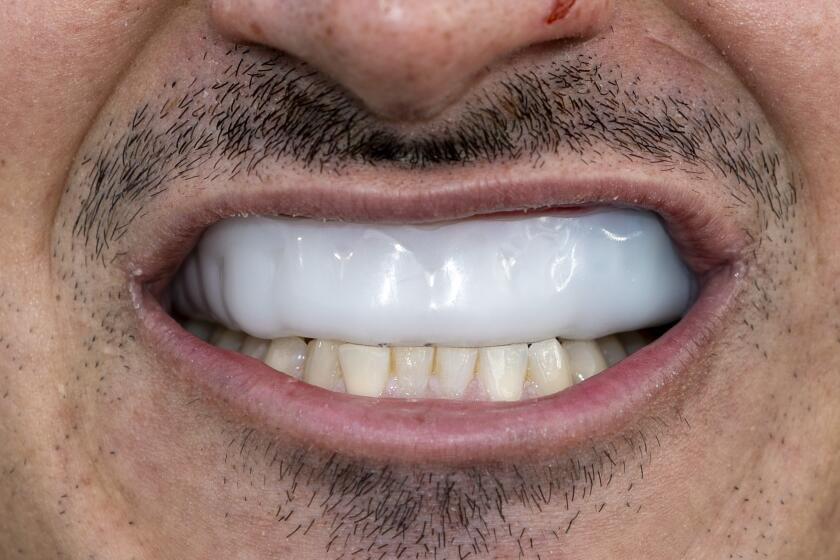Meningitis B strain killed SDSU student
State lab tests have confirmed that the strain of meningococcal meningitis that killed San Diego State University freshman Sara Stelzer is the same variant that caused outbreaks at UC Santa Barbara and Princeton University last year.
On Monday, county health officials said it was Meningitis B that caused Stelzer’s infection and set off a massive treatment campaign at SDSU. Earlier in the day, a university spokeswoman said Stelzer was taken off life support Saturday.
The common vaccine used to prevent four different forms of meningitis does not have effect against the B group. A vaccine that does work against Meningitis B has been approved in Europe but is not yet licensed in the United States.
UC Santa Barbara and Princeton obtained special permission to inoculate their students with the European vaccine. While no problems were reported with use of that vaccine, and it did seem to work at least in the case of UC Santa Barbara, U.S. guidelines require a second infection to emerge at San Diego State before that university can embark on a similar vaccination campaign.
“We hopefully won’t come to a situation where we see additional infections and have to request the vaccine,” said Dr. Dean Sidelinger, a medical officer with the county’s Health and Human Services Agency.
Working together, the university and public health officials reached out to anyone known to have been in direct contact with Stelzer, offering them antibiotics that reliably kill the meningococcal bacteria before it does any harm.
In a statement Monday, SDSU officials said nearly 1,000 students had requested antibiotics or a medical evaluation through the weekend.
So far, Sidelinger said, no additional infections have been detected.
But that does not necessarily mean SDSU is in the clear.
A report on the Princeton and UC Santa Barbara outbreaks, released in May by the National Foundation for Infectious Diseases, highlighted that additional cases do not always appear quickly after the first case.
At Princeton, the first of nine cases occurred in March 2013. Another case was not detected until April. There were two more in May, another in June, then no more until three more students tested positive in October and November. Months passed until another student, this one at Drexel University in Pennsylvania, was infected after a group of Princeton students visited that campus. Subsequent genetic testing confirmed that the meningococcal bacteria present in all of these infections had the same genetic code.
Humans are known carriers of meningococcal bacteria, which live and multiply at the back of the throat of some individuals. Now and then, for reasons science doesn’t fully understand, the bacteria invade a patient’s bloodstream or cerebrospinal fluid, causing deadly inflammation of meninges — membranes that cover the brain and spinal column.
According to the CDC, between 1,000 and 1,200 people contract the disease in the United States each year. Of those, 10 percent to 15 percent die and an additional 11 percent to 20 percent lose their arms or legs, become deaf, develop problems with their nervous systems or suffer strokes.
The fast-moving meningococcal bacteria is transmitted through close contact between individuals, making outbreaks more common on college campuses, where large numbers of people congregate in close living quarters and at functions like parties.
Early symptoms of meningitis include high fever, severe headache, stiff neck, rash, nausea, vomiting and lethargy.
Get Essential San Diego, weekday mornings
Get top headlines from the Union-Tribune in your inbox weekday mornings, including top news, local, sports, business, entertainment and opinion.
You may occasionally receive promotional content from the San Diego Union-Tribune.












